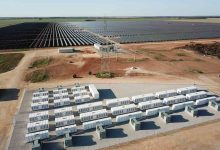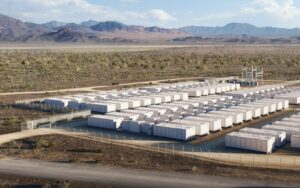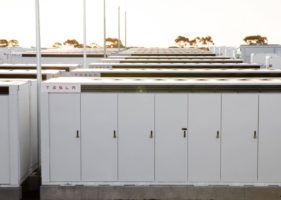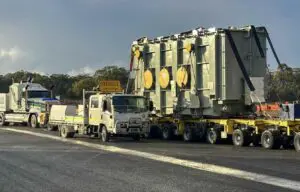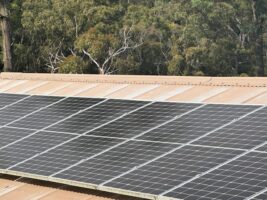Just over a year ago, in the height of the initial excitement about Snowy 2.0, the Australian Financial Review printed some complete tosh about the cost of battery storage.
We told them so at the time in this article, The case against Tesla and battery storge just hit peak stupid, but sadly it’s a theme that has been picked up and run with by the Coalition government, who have relentlessly mocked batteries as being about as useful as the Big Banana, or the Kardashians, and Craig Kelly is still going mad as hell about it on Facebook.
Last week, the Coalition was still claiming that battery storage costs 50 times more than pumped hydro storage – a completely ridiculous claim that is demolished by detailed study conducted by the CSIRO and the Australian Energy Market Operator, and new investments in the US where batteries and renewables are kicking out gas plants..
But the AFR’s appetite for garbage about battery storage is not yet sated. On Monday it published an opinion piece on the subject by a Geoff Carmody, whose CV as a senior Treasury economist, a co-founder of Access Economics and head of his own consultancy may invite some respect. His opinion piece on battery storage certainly does not.
In his rush to demonise battery storage – which rivals his distaste of wind, solar, pumped hydro and electric vehicles if his blog is anything to go by – Carmody has used calculations so ridiculous and absurd it beggars belief.
What on earth was the AFR editorial page thinking when it decided to print this rubbish?
Others have wondered the same thing. The Australian Industry Group’s Tennant Read tweeted this below, complaining about the “unmitigated twaddle”.
One energy expert Allan O’Neil – a regular contributor to the respected WattClarity website – wrote to the AFR, and copied in other experts: “I try to stay out of commentary but seriously sometimes you just have to call bullshit on this kind of nonsense.”
In his letter to the AFR, O’Neil writes that carmody uses “fundamentally misconceived and wildly exaggerated costings”, and then adds “I won’t debunk every error in his calculations”.
But here at RenewEconomy, we’ll give it a shot.
First of all, Carmody makes the assumption that the closed Hazelwood and the soon to be closed Liddell had a combined capacity of 3,600MW. They didn’t, Liddell hasn’t operated anywhere near its rated capacity for more than a decade. Best it can do is 1,680MW.
Secondly, Carmody assumes that the two generators run at 100 per cent capacity. They don’t and they didn’t. They need to close for maintenance, and as a result of unexpected outages (159 coal plant breakdowns since December, 2017), and due to lack of demand.
Liddell operates at less than 55 per cent of its original 2,000MW capacity, or 64 per cent of its re-rated 1680MW capacity. Hazelwood was running at a capacity factor of 73.6 per cent capacity in the 12 months before it closed.
Thirdly, Carmody sells wind and solar well short on their capacity factors. He estimates solar operates at just 15 per cent. Most new solar farms operate at twice that capacity factor of more than 31 per cent.
Carmody credits wind with a capacity factor of 29 per cent. Last year, the Australian average was 36 per cent. Most new wind farms have more than 40 per cent, some have 48 per cent. The new Yandin wind farm in W.A. will operate at more than 50 per cent.
Next, Carmody invites us to consider an impossibility. What if the (trumped up) capacity of Liddell and Hazelwood had to be replaced by wind and solar only, and what if there was a whole day when the wind didn’t blow and the sun didn’t shine.
If we go a whole day without the sun shining, and zero production from all the solar panels in NSW and Victoria, then something more serious has happened. Ditto, one suspects, if there is a whole day without any wind production.
But OK, let’s run with that scenario. The problem with Carmody’s next calculations are that they then assume that all the remaining fossil fuel capacity in NSW and Victoria is unable to be increased.
Remember, many of these plants – and there is more than 30,000MW of this capacity in those two states – sit idle for most of the year as their primary role when they were built was back-up – not to wind or solar – but to the other fossil fuel generators themselves.
Carmody’s calculations also assume that all connections to Tasmania, South Australia and Queensland are not operating. In other words, he invites us to imagine in an impossible vacuum, where inflated capacity has to be replaced by battery storage because no other fossil fuel plant can work, and there are no inter-connectors.
This, then, is how he gets to his ridiculous claim that to go to 100 per cent renewables would require battery installations costing $905 billion at the price of the Tesla big battery, or still $300 billion if the costs fell by two thirds.
Carmody tells us that “a 50 per cent renewables target has a “discounted” battery cost alone of up to $256 to $278 billion. Even a 25 per cent target has a “discounted” battery cost up to $128 to $139 billion.”
What utter crap.
As the Australian Council of Learned Academies study prepared for chief scientist Alan Finkel – and any other serious study – demonstrates, the storage requirements of a grid with 25 per cent renewables is zero, Even at 50 per cent it is minimal, and ACOLA put the battery cost – if batteries alone were used – at just $10 billion.
 This was a point reinforced by former Australian Renewable Energy Agency boss Ivor Frischknecht in a recent interview with RenewEconomy.
This was a point reinforced by former Australian Renewable Energy Agency boss Ivor Frischknecht in a recent interview with RenewEconomy.
“Until you get to 50 per cent renewables, bugger-all is required,” Frischknecht says. And even at 76 per cent, the need is only 100GWh” – which begs another question about the mad rush for Snowy 2.0’s 350GWh.
As O’Neil writes, Carmody and his readers would benefit by ignoring his meaningless back-of-the-envelope figuring and instead absorbing what a group of competent modellers employing rigorous analysis have already had to say on this topic in AEMO’s own Integrated System Plan published last year.
“Either he has no understanding of the operation and economics of large-scale power systems, or is deliberately seeking to mislead readers by using “fake analysis”. His piece is either an embarrassing display of his own ignorance, or crude partisanship cloaked in a barrage of irrelevant data.
“I won’t debunk every error in his calculations, but Carmody makes the fundamental mistake of assuming that renewable generation unable to produce at full capacity “24/7” must be “backed up” megawatt for megawatt by batteries (or pumped hydro) with enough storage to run flat out for 24 hours, an arbitrary figure plucked from nowhere.
“And this even in cases not aiming for 100% energy supply from renewables but at eminently more achievable levels of 50% or 25% (close to the NEM’s current level).

